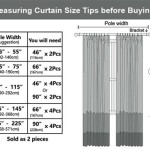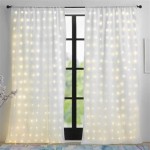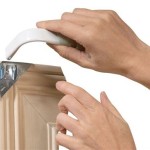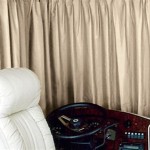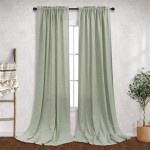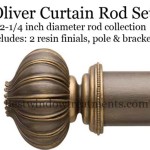Different Types of Curtain Hooks: A Comprehensive Guide
Curtain hooks are essential components in any window treatment setup, serving as the link between the curtain fabric and the drapery rod or track system. Their primary function is to facilitate smooth and easy operation of the curtains while maintaining their aesthetic appearance. Choosing the appropriate type of curtain hook directly impacts the drape, functionality, and overall lifespan of the curtains and the supporting hardware. This article will explore various types of curtain hooks, detailing their characteristics, applications, and benefits, offering a comprehensive understanding for selecting the optimal hook for different curtain styles and hardware.
The variety of curtain hooks available can be overwhelming. Hooks differ based on material, design, attachment method, and intended weight capacity. Selecting the wrong hook can lead to sagging curtains, damaged fabric, or even failure of the entire system. Therefore, careful consideration of these factors is crucial to achieving the desired look and functionality.
Understanding Hook Materials and Construction
The material of a curtain hook significantly influences its durability and suitability for different environments. Common materials include metal, plastic, and combinations thereof. Each material offers unique advantages and disadvantages.
Metal hooks are typically constructed from steel, brass, or aluminum. Steel hooks are known for their strength and ability to withstand heavy drapery. Brass hooks offer a more decorative aesthetic and are resistant to corrosion, making them suitable for humid environments. Aluminum hooks are lightweight and rust-resistant but may not be as strong as steel or brass. Metal hooks generally provide superior durability and longevity compared to plastic alternatives.
Plastic hooks are typically made from nylon or polypropylene. They are a cost-effective option and generally suitable for lightweight curtains. However, plastic hooks are prone to becoming brittle and breaking over time, especially when exposed to sunlight or frequent use. While plastic hooks are readily available and inexpensive, their limited durability makes them less suitable for heavy or valuable curtains.
Some hooks incorporate a combination of materials. For instance, a metal hook body might be coated with plastic to provide a smoother glide along the rod or track, or a plastic hook might feature a metal reinforcement for added strength. These hybrid designs aim to combine the benefits of both materials, offering a balance between durability and functionality.
Different Hook Styles and Their Applications
Beyond materials, numerous hook styles cater to different curtain heading types and hanging systems. Each style is designed for a specific purpose, ensuring proper drape and functionality. Some of the most common hook styles include pin hooks, pleat hooks, S hooks, and snap tape hooks.
Pin Hooks: Pin hooks are the most versatile and widely used type of curtain hook. They feature a sharp pin that is inserted into the back of the curtain heading, creating a secure attachment point. Pin hooks are adjustable in height, allowing for precise control over the curtain's length and the amount of fabric that drapes below the rod. They are suitable for use with various heading styles, including pencil pleat, pinch pleat, and goblet pleat curtains. The adjustability of pin hooks makes them ideal for fine-tuning the appearance of curtains and compensating for minor variations in rod height or fabric length. The pin itself is generally made of steel, and the hook body can be either metal or plastic.
Pleat Hooks: Pleat hooks are designed specifically for use with pleated curtains, such as pinch pleat or French pleat curtains. These hooks feature multiple prongs that are inserted into the pre-formed pleats on the curtain heading. Pleat hooks provide a consistent and uniform pleat spacing, enhancing the overall aesthetic of the curtains. They are typically made of metal and come in various sizes to accommodate different pleat depths. Using the correct size of pleat hook is crucial for maintaining the integrity of the pleats and preventing damage to the fabric. Pleat hooks are less versatile than pin hooks and are best suited for curtains with pre-defined pleat arrangements.
S Hooks: S hooks are characterized by their distinctive S-shape, with one end attaching to the curtain heading and the other end hooking onto the drapery rod or track. S hooks are simple to use and provide a quick and easy way to hang curtains. However, they offer less adjustability than pin hooks or pleat hooks and may not be suitable for all curtain styles. S hooks are often used with grommet-top curtains or tab-top curtains, where the hook is inserted through the grommet or tab. They are also commonly used in commercial settings, such as theaters or hotels, where ease of installation and removal is prioritized. S hooks are typically made of metal for durability and load-bearing capacity.
Snap Tape Hooks: Snap tape hooks are designed for use with curtains that have a special snap tape sewn onto the heading. The hooks feature a series of snaps that attach directly to the snap tape, creating a secure and evenly spaced attachment. Snap tape hooks are often used in conjunction with track systems, providing a smooth and effortless glide along the track. They are particularly well-suited for lightweight to medium-weight curtains and offer a clean and professional look. Snap tape hooks are typically made of plastic and are easy to install and remove. The snap tape itself is sewn onto the curtain fabric, providing a consistent and reliable attachment point for the hooks.
Crucial Considerations for Choosing the Right Hook
Selecting the appropriate curtain hook involves considering several factors, including the weight of the curtains, the type of heading, the style of the drapery rod or track, and the desired aesthetic. Ignoring these factors can lead to unsatisfactory results and potential damage to the curtains or hardware.
Weight Capacity: The weight of the curtains is a primary consideration when choosing curtain hooks. Heavier curtains require stronger hooks made of durable materials like steel or brass. Using hooks with insufficient weight capacity can cause them to bend, break, or even pull the curtains down, leading to damage and potential injury. It is always advisable to err on the side of caution and select hooks that are rated for a higher weight capacity than the actual weight of the curtains. This provides a safety margin and ensures that the hooks can withstand the stress of daily use.
Curtain Heading Type: The type of curtain heading dictates the type of hook that can be used. Pencil pleat, pinch pleat, goblet pleat, and snap tape headings all require different types of hooks for optimal performance. Using the wrong type of hook can result in uneven pleats, sagging curtains, or even damage to the fabric. It is essential to consult the manufacturer's instructions or seek professional advice to determine the appropriate hook for the specific curtain heading. Improper hook selection not only affects the aesthetic appearance but can also compromise the functionality and longevity of the curtains.
Drapery Rod or Track Compatibility: The type of drapery rod or track system also influences the selection of curtain hooks. Some rods are designed for use with S hooks or grommets, while others require pin hooks or pleat hooks. Track systems often utilize snap tape hooks or specialized glider hooks that are compatible with the track's design. Ensure that the chosen hook is compatible with the existing hardware. Attempting to use an incompatible hook can result in difficulties with installation, uneven curtain drape, and potential damage to the rod or track system.
Aesthetic Considerations: While functionality is paramount, aesthetic considerations also play a role in choosing curtain hooks. The hooks should complement the overall style of the curtains and the room décor. Metal hooks can add a touch of elegance and sophistication, while plastic hooks offer a more discreet and minimalist look. Some decorative hooks are available in various finishes, such as brass, chrome, or black, allowing for customization to match the hardware. Choosing hooks that blend seamlessly with the curtain fabric and hardware contributes to a cohesive and visually appealing window treatment.
By carefully considering these factors, one can select the most appropriate curtain hooks for any window treatment project, ensuring optimal functionality, durability, and aesthetic appeal. Different styles and materials cater to distinct needs, and a thorough understanding of each is essential for achieving the desired result.

10 Diffe Types Of Curtain Hooks Best 2025

15 Types Of Curtain Hooks Styles Options Installation Ceiling Rod

Types Of Curtain Hooks Zenn Interiors

10 Diffe Types Of Curtain Hooks Multiple Styles For All Window Treatments

Types Of Curtain Hooks You May Be Interested In

Types Of Curtain Hooks

Curtain Style Guide 15 Types Of Curtains For Your Home

Curtain Style Guide 15 Types Of Curtains For Your Home

Types Of Curtain Rods The Home

A Complete Guide To Hanging And Fitting Curtains


